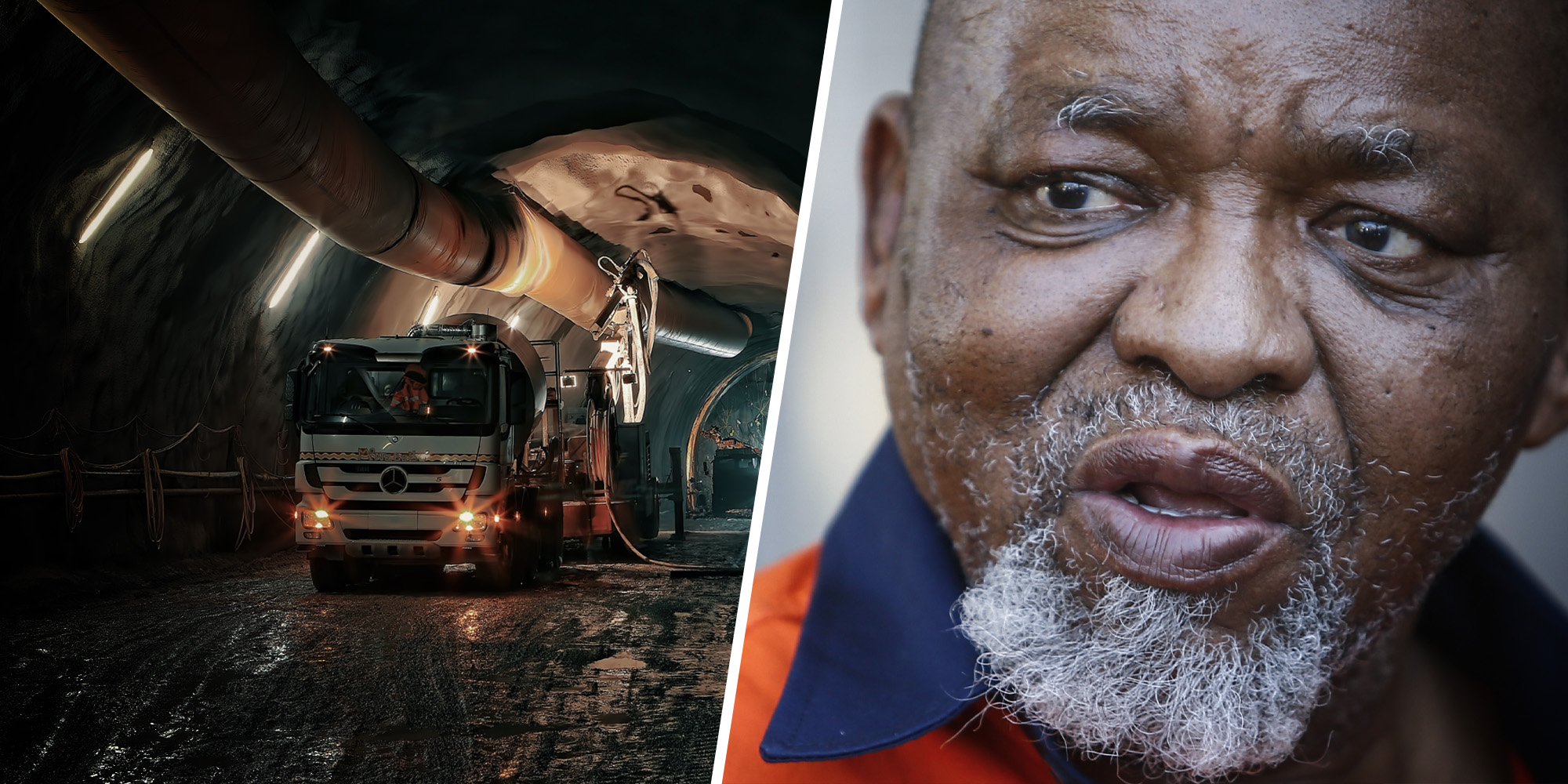Minerals and Petroleum Resources Minister Minister Gwede Mantashe seems to have found the light on the transparency front.
In his prepared – as opposed to precisely his delivered – remarks at the Joburg Mining Indaba on Thursday, the minister committed to providing quarterly updates on applications for mining, prospecting and related rights and permits.
It’s a big win for advocates of transparency and investor sentiment, as well as another indication that the reform process under the Government of National Unity (GNU) is moving in the right direction.
“To ensure greater transparency, we have resolved to publish on the department’s website the quarterly reports of applications processed and finalised,” the minister said in his prepared remarks shared with the media.
Mantashe did not provide an exact figure on the present size of the applications backlog, which has been under the spotlight since it emerged more than three years ago that it had reached more than 5,000.
But he did provide an update on the number that had been processed and pointedly noted Daily Maverick’s recent reporting on the issue comparing it with what has obtained under Home Affairs – and perceptions that the department was allergic to transparency – before making the following remarks.
Read more: After the Bell: A tale of two backlogs at Home Affairs and Mineral Resources offers a revealing light on GNU governance
“I can report to you that between April 2023 and March this year, the department processed and finalised 127 mining rights, 1,527 prospecting rights, and 2,313 mining permits and ancillaries,” the minister said.
“Whereas we still have significant backlog in Mpumalanga, I can report that the backlog in the Northern Cape, Limpopo, the North West, Eastern Cape, and KwaZulu-Natal has been reduced significantly, and that there is no backlog in the Western Cape and Free State.”
The Mpumalanga backlog, it must be said, has been flagged before by the department and critics alike. It is widely regarded as a reflection of rampant corruption in that office, which will now be under the microscope of increased scrutiny.
Read more: Mining permits point to shady Mpumalanga scramble for coal
So this commitment to quarterly updates is a big deal. The backlog in applications for rights and permits – and the lack of transparency around it – has long been seen as an obstacle to investment, notably on the exploration front, in South Africa’s mining sector.
It’s a key reason why South Africa’s share of global exploration spend has collapsed in recent years to less than 1% from 5% two decades ago – despite its massive mineral endowment. And given the long timelines for capital commitment to mining projects, you won’t have new mines if you don’t have exploration.
Read more: Mantashe’s missed mining target — SA still accounts for less than 1% of global exploration spend
On that score, Mantashe said that he and the mining industry were on the same page regarding the urgent need for a proper cadastral system to replace the dysfunctional South African Mineral Resources Administration System (Samrad) system for processing mining licences.
“It’s not a nice-to-have ... we agree with the industry that we need to have a transparent and efficient licensing system that is essential for the industry to grow,” the minister told the Joburg Indaba.
“The completion of the migration process to the new efficient and transparent mining licensing system in June next year, is poised to modernise our licensing system,” Mantashe said, reiterating comments he made at a mining conference in Australia in September.
This is an online portal that displays a country’s mineral wealth in a way that is accessible to the public and allows companies to use the information to seamlessly apply for mining and related rights.
Read more: Explainer: A mining cadastre and public transparency
After years of needless delays that indeed gave the impression that Mantashe was “allergic to transparency”, the timelines are important and the Department of Minerals and Petroleum Resources can be held accountable for delivery.
This – perhaps grudging – embrace of transparency stems from very open conversations with the mining industry, the media and the wider public.
It seems to be in the spirit of the Government of National Unity (GNU) and the growing partnership between the government and private sector to tackle the challenges that are constraining South Africa’s potential to attract investment, grow the economy and (hopefully) create jobs in the process. DM
This article is more than a year old
Business Maverick
Transparency win — Mantashe commits to regular updates on mining applications
In his prepared remarks for the Joburg Mining Indaba on Thursday, Minerals and Petroleum Resources Minister Gwede Mantashe committed to providing quarterly updates on the department’s website of mining and related rights and permits that have been processed and finalised. It’s a big win for advocates of transparency.





